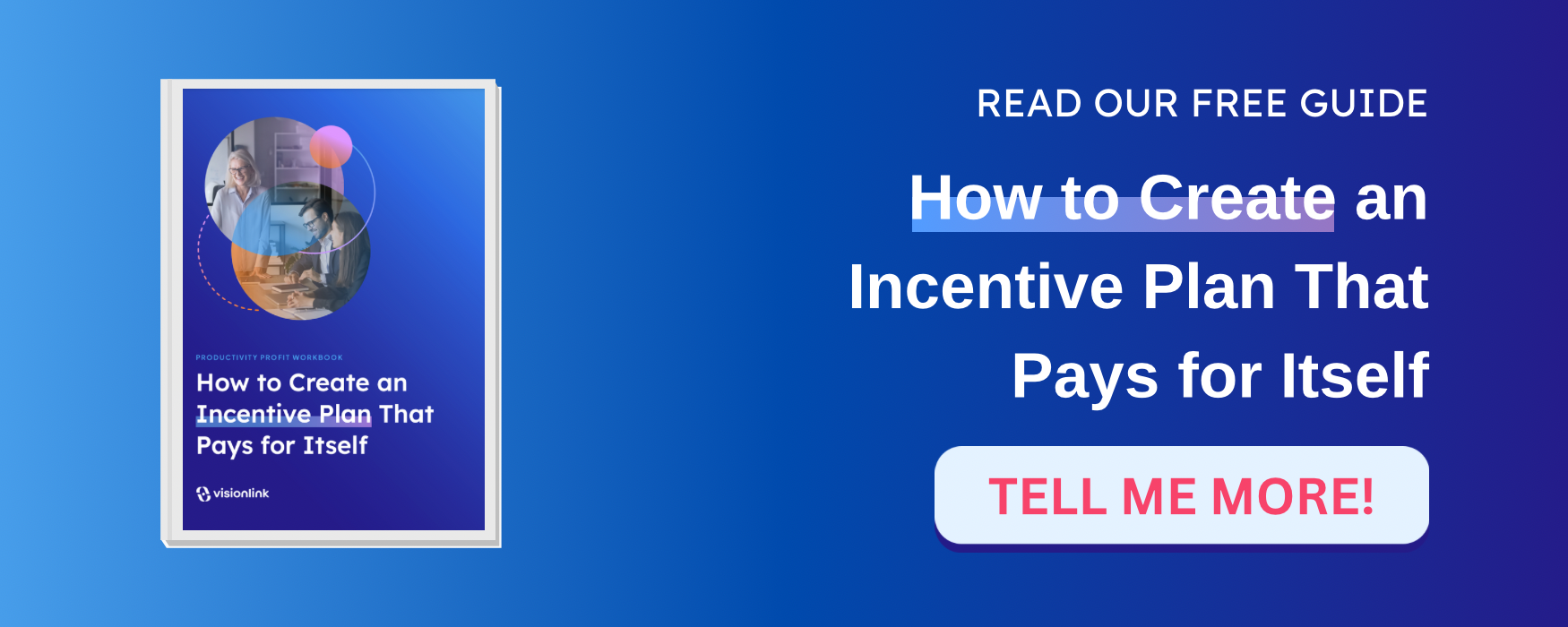
Often, when one of my associates or I first talk with a CEO or business owner who has been referred to VisionLink, they want to know whether or not we can help them build a stock plan. Their assumption is they need to share stock to retain and/or attract key producers. After telling them the answer is yes, we can help them build such a plan, we subsequently suggest they may be starting with the wrong premise. “Why do you want to share stock?” we usually ask. “Well, that’s what our competitors are doing so we need that kind of plan to be competitive.” Sigh.
Sometimes, when I’m feeling a little feisty, I’ll respond by saying, “Is that how you approach product development and market innovation also?” (Silence.) “When you want to get your people really fired up about the vision and future of your company, do you call a meeting and say: ‘Okay gang—this year we’re going to try to mirror as much as possible what our competition is doing! Let’s all get behind our copycat strategy! Full steam ahead! Ready break!’”
I hope my point is obvious. The “we need that kind of plan to be competitive” thesis is flawed.
If a high-impact long-term incentive plan is characterized by its ability to give you a competitive advantage in attracting and retaining great people—and getting them to sustain superior performance—then copying a competitor’s LTIP is, by definition…uncompetitive. Right? I mean we don’t make any other strategic business decisions that way, do we? Why do we think that approach is best when it comes to engineering an incentive plan?
The reality is that a long-term incentive plan must include five key ingredients or it won’t succeed regardless of the specific type of program you have--equity, phantom stock, profit pool, or otherwise—and whether or not your competitor has a similar plan. So instead of talking about how we can help you build a stock plan, let’s talk about what needs to go into your plan, regardless of its form.
1. Its purpose is clearly defined. People responsible for compensation in a business should be able to justify the existence of every plan they institute. As a result they need to be able to answer certain questions about any strategy they are considering. What do we want to have happen as a result of this plan being implemented? What will improve because we have it? How should things be different—better—a year or two after we’ve put this plan in place than they are today? How will we define success for this plan? What group of people or roles will be impacted by the plan? What results are we targeting by introducing this plan (improved margins, increased profits, revenue growth, etc.)? What part of our compensation philosophy does this plan fulfill (long-term value sharing, competitive salaries, alignment with business model)? More queries along these lines should be posed but you get the idea.
2. It’s strategically aligned. This has to with creating unity between company vision, business model and strategy, roles and expectations and financial rewards so that plan participants see how each link in that chain relates to the others. In other words, your value sharing approach needs to make that line of sight stronger not weaker. It should clarify and give emphasis to key long-term priorities and goals. For example, if your organization’s focus is on doubling revenue over the next three years, you will be led to a plan design and metrics that emphasize that outcome. However, if your primary priority is to improve margins and profits, you will likely consider a different plan type. LTIP design starts with defining outcomes, not with determining a plan type.
3. It’s “self-financing.” The question that should be asked when any value-sharing plan is being considered is as follows: "Will the investment in this plan contribute to the company's financial success and improve shareholder value?" There are really two potential dimensions to the answer. One has to do with hard dollars--improved revenues, profits, cash flow, margins, sales volume, etc. The other is the soft dollar impact--increased productivity, reduced turnover, improved employee commitment and engagement, etc. Self-financing means compensation is treated as an investment and plans are engineered to pay benefits out of a superior value performance produces through either or both of those two dimensions. In such a framework, compensation doesn't really "cost" the company anything. It's paid out of "productivity profit." Plans that are self-financing carry with them an inbred accountability because they are true value-sharing plans and not just “incentives.” Value has to be produced for the benefit to be realized.
4. Its payout is meaningful. To achieve this in a long-term incentive plan design, you’ll need to find the right balance between art and science. While there are some general rules of thumb about how much value should be shared for certain organizational roles and positions, you will also need to gain a “feel” for what your key people consider meaningful and fair. Key producers want to know that if they help drive significant growth in your business, you have a philosophy and mechanism that rewards that value creation—and that the benefit they receive is proportional to what they’ve created. Organizations that are most successful at doing this have shareholders who adopt a wealth multiplier mindset and philosophy in their approach to compensation. They believe a “rising tide lifts all ships” and that by paying out meaningful value to those responsible for its creation accelerates the growth of their own value.
5. It’s achievable. Regardless of the plan design you settle on for your LTIP, participants need to believe that the performance requirements associated with their incentive payout are realistic. They need to believe that what’s being asked of them is attainable. This implies a couple of things. First, it suggests that the plan participant is able to actually impact the outcomes to which the value sharing is attached. Second, it implies that if there are team or company performance metrics that impact the payout potential of the plan, they are believable and not “pie in the sky” goals. If the plan participant doesn’t believe in the underlying assumptions to which the plan benefit is tied, he will sense there’s an inherent unfairness in the approach. As a result, the company loses credibility and the employee disengages.
LTIPs matter and can play a significant role in framing an effective financial partnership with your key people—if they are properly engineered. These five ingredients are foundational to building a long-term value sharing plan that works and offers the competitive advantage your value proposition should enable. So if you’re about to implement this kind of incentive, focus less on what your competition is doing and more on the outcomes you want your plan to help you achieve.
Ready to Get Started?
When it comes to building a compensation strategy, you can trust that VisionLink knows what works and what doesn’t. We are ready to share that knowledge with you.
Stay Connected
Receive free, ongoing access to updates on compensation and talent trends, reports, events, and more.


